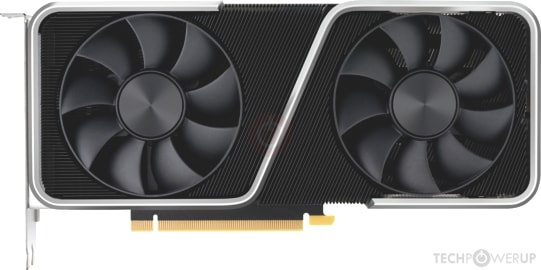Zuzu
Gold Member
Digital Foundry just uploaded their Direct Weekly and they confirm that Cyberpunk 2077 is using DLSS on the Switch 2. This is the first game confirmed to be using it I believe. Here's the video and the segment starts at 20 mins 20 seconds but the video is timestamped so it should take you straight to the right chapter when you click on it:
Here's the quote from CD Projekt PR that confirms it:

Other statements from CD Projekt in response to questions in an email sent by Richard:


Summary:
And here's the corresponding Eurogamer article "Cyberpunk 2077 on Switch 2 uses DLSS confirms CD Projekt RED" if you want to read more:
Here's the quote from CD Projekt PR that confirms it:

Other statements from CD Projekt in response to questions in an email sent by Richard:


Summary:
- CD Projekt Red has confirmed that Cyberpunk 2077 on the Nintendo Switch 2 will indeed use a version of DLSS, powered by Nvidia's Tensor cores. The game will utilize DLSS in all four modes—both handheld and docked, with performance and quality variations.
- Additionally, the game is targeting 1080p resolution in all modes except for handheld performance mode, which aims for 720p at 40 FPS. However, dynamic resolution scaling (DRS) is in play, meaning the actual resolution can range from 540p to 1080p in 1080p modes and 360p to 720p in handheld mode.
- There's definitely a lot of intrigue surrounding Cyberpunk 2077 on the Nintendo Switch 2, especially with its DLSS implementation. CD Projekt Red has confirmed that the game uses a version of DLSS tailored for the Switch 2, powered by Nvidia's Tensor cores. This suggests that it might be an optimized or modified version of DLSS, possibly designed to work within the constraints of a handheld device.
- The hands-on footage from Deck Wizard provides a close-up look at how the game runs on the Switch 2, particularly in Performance Mode, which targets 40 FPS. While the footage highlights aliasing and image breakup, it's unclear whether this is due to DLSS limitations or low-resolution post-processing techniques. Some effects, such as motion blur and depth of field, appear to be rendered at lower resolutions, which could be an optimization strategy to reduce bandwidth consumption.
- Nintendo's lack of tech disclosures makes it difficult to determine whether this version of DLSS is fundamentally different from what's used on PC and other consoles. However, the fact that Cyberpunk 2077 is running on the Switch 2 at all—while maintaining a reasonable level of performance—is impressive.
And here's the corresponding Eurogamer article "Cyberpunk 2077 on Switch 2 uses DLSS confirms CD Projekt RED" if you want to read more:
Article: One of the most ambitious titles lined up for the launch of the Nintendo Switch 2, CD Projekt RED's Cyberpunk 2077 has been showcased via work-in-progress code seen at the console's launch tour. Digital Foundry had the chance to go hands-on at the recent London event and while our initial impressions are on the record, many questions remained unanswered. Is the port using Nvidia DLSS? CDPR has now confirmed that the answer is yes, making this the first known title to use the machine learning-based upscaling technology.
"We're using a version of DLSS available for Nintendo Switch 2 hardware, powered by Nvidia's Tensor cores," the firm told us. "The game utilises DLSS in all four modes: in handheld and docked, and the performance and quality variations of each."
DLSS has been viewed as a 'magic bullet' of sorts in the run-up to the Switch 2's unveiling. In a world where developers are pushing visual technology to the next level, running games at full native res with consistent performance becomes unviable, so rendering at lower rendering resolutions is commonplace, with upscalers used to produce the final output image. These upscalers can range from basic bilinear scaling to more advanced techniques, like TAA upscaling - where information from prior frames is fed into the current one to improve detail.
DLSS is a form of TAA upscaling, but with a twist - by feeding the lower resolution frame along with history from prior frames and other data, such as motion vectors - a neural network is then used to reconstruct the image. As the Switch 2's GPU includes machine learning tensor cores, there's no reason why any DLSS technology couldn't come to the Nintendo hybrid - the caveat being that there's still a computational cost to using it.
CD Projekt RED also confirmed that the current target for the Switch 2 version of the game is to offer different graphics modes - a quality and performance toggle for the handheld and docked versions. When connected to a TV, there's the choice of a 30fps quality mode and a 40fps performance mode. The latter would presumably operate only with the TV in 120Hz mode - a new frame for every three display refreshes, up against the 30fps quality mode which delivers a new frame for every other refresh. With consistent performance, both should look smooth, with the 40fps mode sitting between 30fps and 60fps in terms of fluidity. Both modes are using 1080p as the output resolution with dynamic resolution scaling in effect in combination with DLSS.
The handheld mode - as things stand - is slightly different. Necessarily so as system performance is lower. In this scenario, the quality mode is still outputting a 1080p image with DLSS and dynamic resolution scaling, again targeting 30fps. The performance mode sees the output resolution drop to 720p, with the handheld screen in 120Hz mode and 40fps as the target.
In terms of input resolutions, our initial pixel counts from the very, very short snippet of footage seen in the Nintendo Direct delivered readings from 540p to 1080p - and the fact we could pixel count it at all made us doubt whether DLSS was in play at all. CD Projekt RED has also confirmed that "scaling can range from 2x and up per axis", so depending on GPU load, the DLSS upscaler will be fed with anything from 540p to 1080p in the 30fps quality modes and the docked 40fps performance mode. For the handheld iteration of the performance mode, the 2x and up scaling would suggest DRS between 360p and 720p, depending on GPU load.
DLSS compatibility had been mentioned by Nintendo and Nvidia in previous PR, but its use in Cyberpunk 2077 (and in both handheld and docked configurations, no less) is our first confirmation of the technology being used in a launch title. However, we are seeing a slightly different utilisation of DLSS compared to PC. There, it's typically the case that post-processing elements are rendered at the same output resolution. So, if you're outputting 1080p from a 540p image, there are still components of the image that should be rendered at full 1080p.
It may be the case that Cyberpunk 2077 is still rendering those post-processed components at input resolution instead, which may explain why we're able to see obvious stair-stepping edges that make pixel-counting possible. As you'll see in the DF Direct posted today, it does look to be the older convolutional neural network version of DLSS that's being used - not Nvidia's freshly minted DLSS 4.0 transformer model.
In our hands-on with Cyberpunk 2077 at the Switch 2 London event, our impression was that CDPR's work-in-progress code was recognisably Cyberpunk, but we encountered many situations where it appeared both CPU and GPU were over-taxed resulting in some lurching drops to performance. However, the code was seven weeks old at that point with a good deal of development time remaining until the Switch 2 launch on June 5. We view Cyberpunk 2077 as something of a benchmark game - and can't wait to see final code on the new Nintendo console.
Last edited:


















